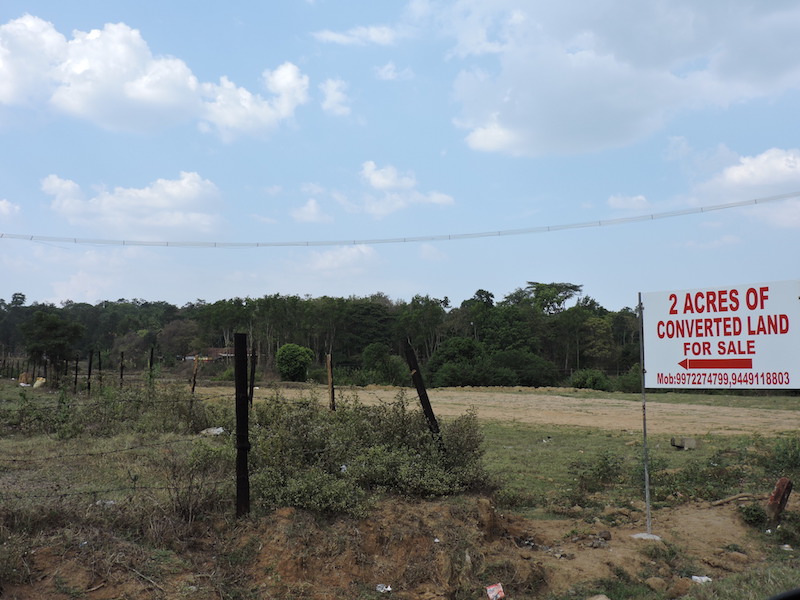The Buck Stops Here: How Citizen Action Brought Victory For India's Environment

To act or not to act? Back in 2016 when I was a Campaigner at Jhatkaa.org, I was faced with this very same question.
I had just learned about a proposal that our Ministry on Environment, Forests and Climate Change (MoEFCC) had put up for scrutiny in the public domain. This proposal in the form of a draft notification hoped to make the Environmental Supplemental Plan (ESP) a key component of the Environment Impact Assessment regime in India. The current regulation on this was notified in 2006 and defines how and when a project can be given an Environment Clearance.
The ESP though was far more interested in making life easier for industrialists than in treating environmental resources responsibly. It proposed to allow contractors and companies to admit they had started their projects illegally, causing damage to the environment. They would then have to pay a fine, after which they would be given the required clearance and allowed to continue their illegal activity - business as usual.
Sand mining Source: Wikipedia Commons
We know from experience that most violators don’t pay the fines levied on them. Take for example the Rs. 5 crore fine imposed on the The Art of Living Foundation for the damage caused to the Yamuna river bed or the Rs. 200 crore fine levied on the Adani SEZ in Gujarat. As environment researchers Kanchi Kohli and Manju Menon point out, “ Even if one were to be more optimistic about these collections, the government’s ability to use these resources to restore the environment, or provide justice to scores of affected people, is severely lacking. The example of crores of rupees collected to compensate for forest loss, and the Comptroller and Auditor General’s damning report on how these monies have been spent, will help change one’s mind.” This, to me, seemed like a proposal that had the capacity to forever doom any chance of protecting what remains of India’s natural resources.
It undermined the right of local communities to weigh in on whether a particular project should be given a clearance.
It was vague on what activities would be regularised under this plan. And, it did not specify how the government proposed to quantify and remediate damage to ecosystems. It would encourage violations instead to preventing them! And not to forget, 2,900 words of the 3,850-word draft were plagiarised from the Supplemental Environmental Projects Policy (SEP) document adopted by the United States in March 2015.
After discussing this issue with lawyers, policy experts and activists, I realised that there was no way we could allow this policy to be implemented without any push back. As Indians, we deserved to know what was being planned for our future.
Illegal mining in Odisha Source
We knew from past campaigns that moving the MoEFCC was a near impossible task. But sometimes, the act of resistance itself is revolutionary. We had a window of two months to send in comments to the MoEFCC highlighting any objections to the proposal and we weren’t about to waste them.
By helping Jhatkaa.org’s members understand the impact of this proposal and providing the means for them to easily submit well researched comments to the Ministry, we enabled thousands of common citizens to have their voices counted in democratic decision making in India. More than 2,000 comments were sent in via the Jhatkaa.org platform alone!
I continued follow up with the MoEFCC over the next year but it wasn't clear what the outcome was of this effort was. So I filed an RTI asking them how many comments they had received, what the nature of the comments was and what the next steps were with regard to finalisation of the policy.
For one whole year, there was no response. Then, in August 2017, I received this RTI response:
The MoEFCC had paid attention to more than 25,000 citizens who had sent in their comments, almost all opposing the ESP draft notification. And then…they shelved the proposal!
This is unprecedented, in my personal experience working on environmental issues.
Sure, other factors like comments from industry members saying they didn't want to pay fines that could have influenced the ministry. The MoEFCC did come up with an alternate proposal which gave violators a 6 month window to apply for post facto clearance and that too has been stayed by the Madras High Court.
But it’s important that we see this for the win it is. Because we just stopped an extremely flawed piece of policy from jeopardising India’s environment for years to come!
Low-lying paddy fields ready to be constructed upon Image: Author
This win highlights why we must continue to engage with the government and legislature as often as the opportunity presents itself.
These windows of engagement were created for us to have our say in decision making that affects the future of our nation. It is as important as casting your vote every 5 years.
If we truly value our democracy, we must look look for every way to engage with it meaningfully, innovating as we go along, before we give up on it. This approach may not work every time. And that’s ok. That’s why there are other forms of engagement and resistance!
So, in these hopeless times, when the problems that need solving seem never ending, should one yield to this impending gloom and suppress that niggling urge to take action?
Not today, my friend, not today.
Featured image: Shahin Olakara/ Flickr CC
Tania is an activist and campaigner with a passion for human rights and conservation issues. She is currently experimenting with writing for social change, eco entrepreneurship and understanding sustainability, while keeping rights of indigenous communities as the focus.









